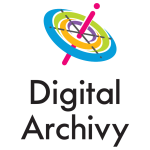“We put the Knowledge in Technology”
One of the most complicated elements in content management derives from the fact that each archive’s collection is different. This is due to the scale, scope, variety, and complexity of the archival collections. It also arises from the fact that there are a variety of contributing factors and specialized requirements. By leveraging our critical thinking and awareness of other successful archival systems, we put our professional knowledge into technology.
Regardless of the size and scope of a project, there are three key elements that require serious review and analysis. In fact, all archival solutions and best practice are influenced by three factors: People, Process and Technology. If you think of it like a Venn diagram, you’ll understand why we believe “Content lies at the intersection of people, process and technology.”
Professional archivists know that an awareness and understanding of archival standards helps define the deliverables and set reasonable goals. By focusing on the relevant elements and contingencies, archivists can help build a trusted digital archive that serves a variety of users and their needs. Solutions based on archival standards help connect relevant content to the specialized interests of its users.
Content Management and Archival Standards
The key component, obviously, is the content itself. As a result, it is critically important to observe people and analyze their processes carefully and non-judgmentally. Knowledge of archival standards, technical requirements and workflows make it easy to use the technology in ways that address the goals and objectives. More importantly, familiarity with other systems helps identify a Designated Community of stakeholders and super-users. This knowledge helps ensure that the technology used in the information ecosystem will deliver results that make assets accessible to the right people in the right format at the right time.
An information ecosystem is created by and dependent on its users, the software and the procedures. A clear understanding of goals and objectives allow archivists to leverage Technology, People and Processes in a way that sets up the institutional archive for success. A successful content management system is effective and efficient, and remains flexible enough for future growth and change. This creates a winning User Experience that ensures the archive is both useful and user-friendly.
Read More”Content Is King and Storage Is Cheap”
We often hear “content is king” and “data storage is cheap.” But few will point out how difficult it is to identify and separate content from data. Content include Intellectual Property. But it also may include emails or text messages. Though content may be Top Dawg, long-term preservation is expensive. Formats, technical requirements and time frame affect storage costs and strategy. Yes, storage is cheap now, but over time, it becomes expensive and costs add up quickly.
Appraising data prior to ingest is invaluable. This builds trust in a system that users can use and find assets. Storage is cheaper than cheap when less data is stored.
Content Is King
Content lies in the Venn Diagram intersection sweet spot of People, Process and Technology. As a result, technology people, and process create content. Workflows can be well-defined if challenges are phased. Also, solutions must be multi-dimensional. The question becomes, how do creators and users find, access, and share the resources they need?
To some, it is unreasonably obtuse to invest in an organization’s organization. But many gradually will see that great value is added with a single unified system. One single source of truth may become a trusted digital repository. If costs are shared, and if it serves many users, an information infrastructure iscost-effective. Armed with content they need, users are empowered to seek, use, need, and share information.
Storage Is Cheap
Each network supports a wide network of extraordinary groups and unique individuals. While accessing information, users employ different processes and recognize their different needs and objectives. These include:
- Data for documentation of records
- Intellectual Property
- Sensitive or confidential data with PII
- Information licensed for limited usage
- Internal and external resources used for reference purposes
- Evidential and analytical data from reports and projects
- Communications
- Promotional and marketing materials
Information creates and adds value to the network. It frames every element of access, need, and use. An understanding of content usage also benefits users. An effective metadata schema will build a sound infrastructure. With guidance, a ttaxonomy can frame knowledge due to internal resources. Controlled vocabularies, preferred terms and acronyms, compiled from a style guide will fortify a trusted system and help with user adoption.
Consequently, we build effective and efficient information management systems. Institutions migrate structured and unstructured data to the Cloud. Sooner or later, they will need a strategy. Without a plan, they practically guarantee they will misunderstand their institutional knowledge.
Content is King, but context is queen and metadata is a prince.
Check out my experience from a list of clients with whom I’ve worked: http://www.digitalarchivy.com/clients/
Read More

